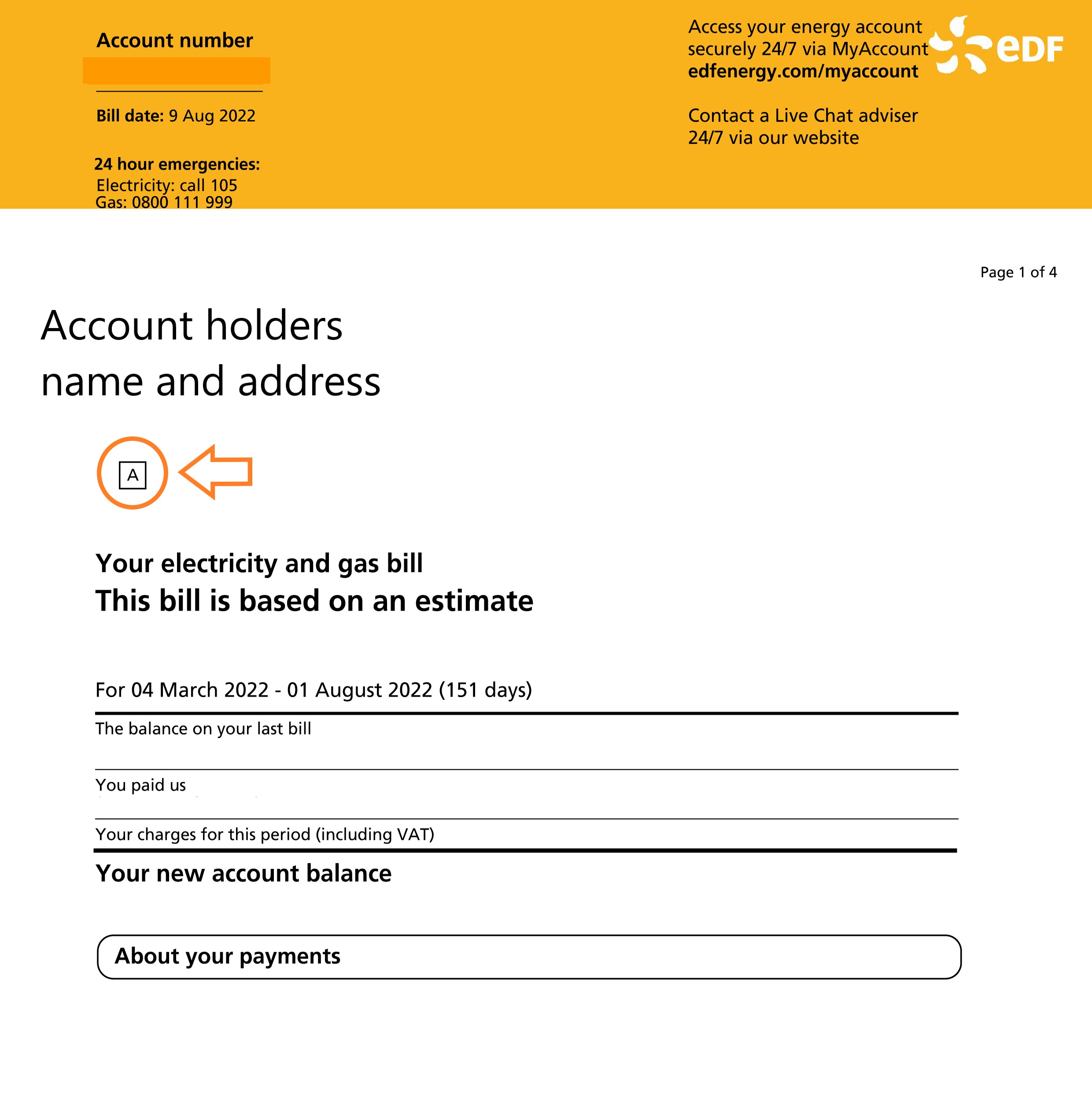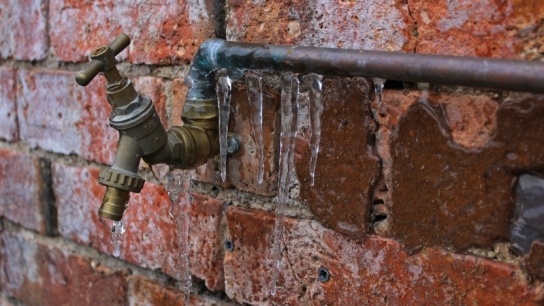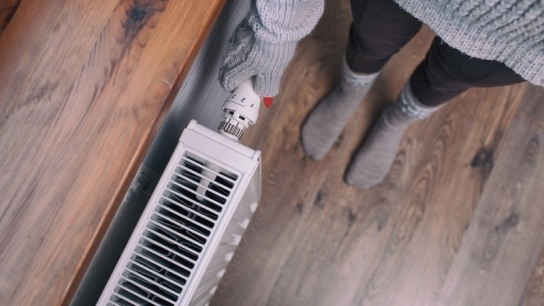All the info you need to know about power cuts
We've pulled all the information together you'll need into one place. Find out about
- Why do power cuts happen
- How to check power cuts in your area
- What to do if you experience a power cut
- What to do if there is a nationwide emergency power cut
Why do power cuts happen?
Like the railways, the UK has energy suppliers like us who supply the energy to customers and businesses. Then there are the Network Distribution Operators who own, maintain and operate the pipes and cables which transport your electricity to you. You can find out who your Network Distribution Operator is through the Energy Networks Association website.
As with anything, the operators work hard to maintain these systems and react when there is a power cut in their area. Power cuts can sometimes happen and are usually caused by one of the following reasons;
- Acts of nature – including storms which can cause lightning strikes, flooding and fallen trees. These can all cause damage to cables and equipment
- Accidents – we're all human, so damage to cables can come from contractors or even from people digging in their gardens and hitting a cable
- Fire or theft – which damages the equipment on the network or in substations
- Voltage dips and short power cuts can also happen – particularly in rural areas where overhead lines are more likely to get hit by flying birds
How do I know if there is a power cut in my area?
If there is a planned power cut in your region, the Network Distribution Operator will contact you to let you know. However, there will be times when this is more difficult due to unforeseen issues that can happen.
You can also sometimes track power cuts in your area through your Network Distribution Operators' website. Find out who your operator is and track power cuts in your area.
If you need to report a power cut, you can do this easily by calling the emergency number 105. It's free of charge to contact and will put you through to your local network operator, who can give you help and advice.
You can find more info on the 105 website.
Can I claim for any power cuts?
This will all depend on why the power cut happened, how you were informed, and how quickly power was restored. You'll need to contact your Network Distribution Operator and start the claim process through them.
How to stay safe through a power cut
Here are some practical tips on how to keep you and your family safe through a power cut and some things to do before one happens
Tips to help you plan for a power cut
- Keep a torch and batteries handy. A torch is much safer than using candles
- Keep your mobile phones and smart devices charged. If you still use an analogue phone, this should still work
- Get friends, family members or neighbours who rely on medical equipment added to the FREE Priority Services register. They can do this through their energy supplier or their Network Distribution Operator. If you're an EDF customer, you can sign up quickly
Register now for PSR
Tips to keep you safe during a power cut
- Turn off electrical and electronic items at the plug (if safe to do so) – you don't want a power surge to damage equipment when the electricity comes back on
- Stay away from any downed power lines outside – they could still be energised
- Keep an eye on frozen food – it might not be safe to refreeze defrosted food
Nationwide planned emergency power cuts due to power shortages
Sometimes it's necessary to carry out a process of emergency planned energy outages across the country. These are usually rare and are at specific times reacting to an emergency. Like water rationing, when there is a drought, the government will need to take action if there is less electricity available.
The action taken to manage this effectively is called the Rota Disconnection Schedule. The country is split into regions, and each area has its energy supply managed by a different Distribution Network Operator. You can easily find out who your network operator is.
If this happens, here's the critical information you need to know
- As this is carried out as a response to an emergency, you may not get much notice when this happens; typically, it can be as little as 48 hours. You'll probably first hear about it on the national news as an announcement by the government.
- Local and national TV, radio stations and news outlets will broadcast a schedule of disconnections, including details on which areas will be impacted, when, and for how long. If you can't find this information, this website address will keep you updated (it will only be live once a rota disconnection schedule starts) energyemergencies.org.uk, or you can call 08000 121 233 with your postcode to hand (Calls may be charged). Or you can text your postcode to 86633 (Texts may be charged).
- You can find out when you'll be impacted by checking the Rota Disconnection Schedule. Disconnections are carried out by group - your electricity supply is grouped with other properties in your area. Easily find your group at the top left of your energy bill. Look for a letter from A-Z next to your address in bold. Once you've found your rota disconnection letter, you can visit energyemergencies.org.uk to view the schedule.

- You shouldn't be without electricity for more than 3 hours at a time; however, this could be longer depending on the severity of the emergency. The Emergency Executive website will post regular updates when live - energyemergencies.co.uk. These events typically last for 3 hours at a time. However, this could be longer depending on the severity of the emergency, for which you'll get up to 48 hours notice.
Is anything being done to help stop planned power cuts from happening?
National Grid manages the network and distribution of energy in Great Britain and published its Winter Outlook report earlier this year. The report looks at different scenarios that could impact energy supply and demand this winter. To help reduce the risk of blackouts as much as possible, they've launched a scheme that incentivises customers to use less electricity at peak times when supplies are low. The scheme is called the Demand Flexibility Service. Find out more about how we're supporting this service.
Frequently asked questions about nationwide emergency power cuts
What happens if I use medical equipment at home?
If you're registered on our Priority Services Register, and you've agreed to let us share your information with your network operator. In that case, they'll know you need electricity for your medical equipment.
Hopefully, you'll have put together a plan with your doctor or carer in case there is a situation where you lose your electricity supply. Your plan should always include dialling the emergency number 105, which will put you through to your network operator, who can help you further.
Do I get any other support if I'm on the Priority Services Register?
Your network operator will tell you beforehand if there's going to be a planned interruption to your electricity supply. Usually, this is due to essential maintenance work.
Many network operators can offer you other services if you're on the Priority Services Register. These include access to 24-hour priority phone numbers, regular updates and extra help during power cuts.
You can also agree to use a password with your network operator, which their employees will need to tell you when they visit you. So you'll know who they are when you answer the door.
It's also worth ensuring any essential medical equipment has a battery backup. These can power your medical equipment if your electricity supply goes off.
Stairlifts
If you use a stairlift, it will stop working if the power goes off. However, some stairlifts have a manual release handle to help you return the stairlift to the ground floor. Some also have a battery that can provide backup power.
How long can a Rota Disconnection go on for?
This depends on the scale of the problem. The Energy Emergencies website will keep everyone updated for the duration of the shortage at energyemergencies.org.uk. You can also get updates from local or national TV, radio, and most news outlets.
How do I find my rota disconnection code?
You can find your group in bold at the top left-hand side of your latest energy bill - you can access your bill in MyAccount or via the app if you don't get them through the post. Or you can go to www.energyenergencies.org.uk and search for your group using your postcode.

In this example, the rota disconnection is A
What if my supply doesn't come back on?
If your supply doesn't come back on automatically, you should first check your trip switch and reset it if necessary and safe to do so. If that doesn't work, you can use the emergency contact number by dialling 105.
Why has this happened?
You can read more about why this is happening in the press release from the Secretary of State. These events usually occur when there is greater demand for electricity than can be supplied. Therefore, to help rebalance the grid, electricity supplies must be intermittently turned off.
Can I claim compensation?
The UK government, not energy suppliers, enact Rota Disconnection Events. They affect all customers and suppliers and are beyond our control, so we won't be able to compensate customers for any costs they incur.
My business provides a vital service. How do I find out if my supply will be interrupted?
Businesses can apply for protected site status to avoid disconnection. Contact your Network Operator; you can find their telephone number on the front of your bill.
Read our other helpful blogs

Why do pipes freeze? Simply put, your pipes always have a little water in them, and when temperatures plummet, that water freezes and nothing can pass through.
We've pulled together some info to help you prevent your pipes from freezing.

A home with no heating or hot water is no fun. Here's what to check if you find yourself in this situation. Read our tips when you have no heating or hot water.